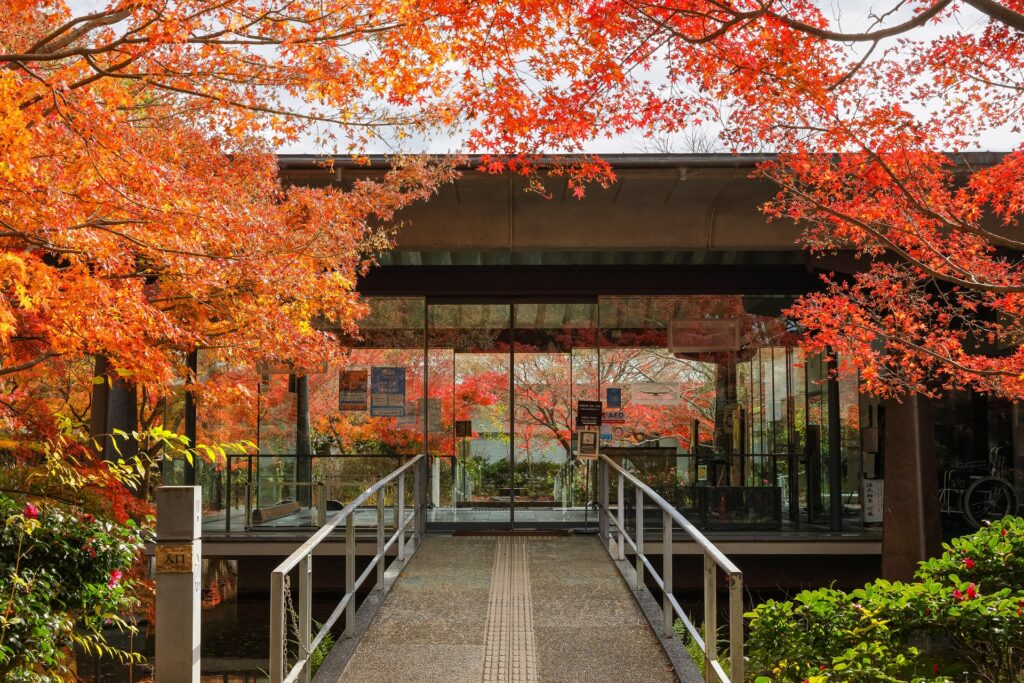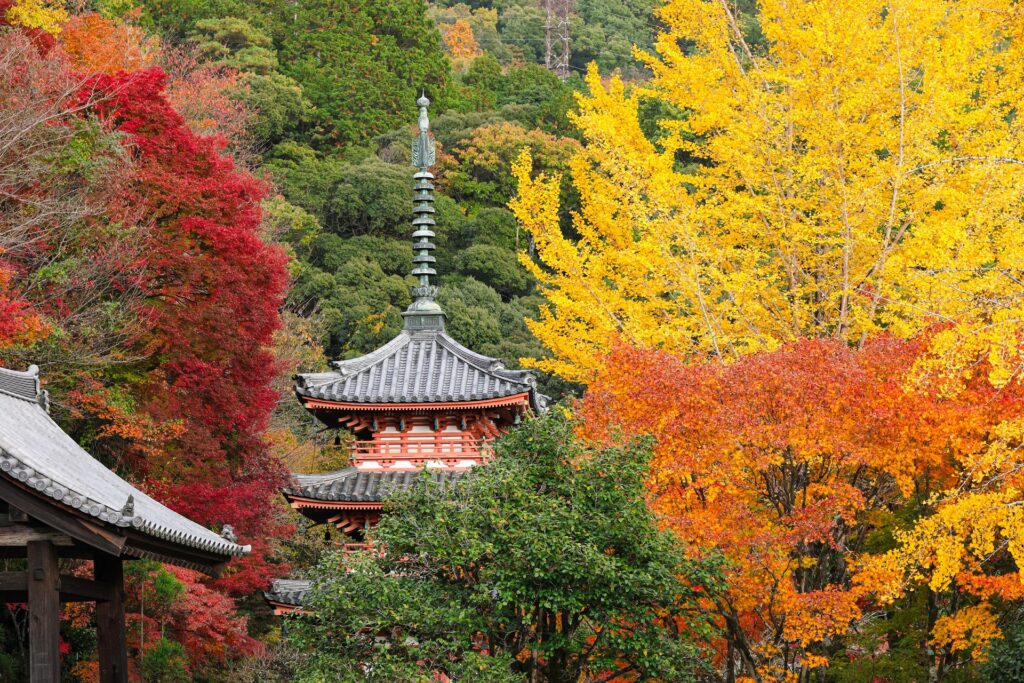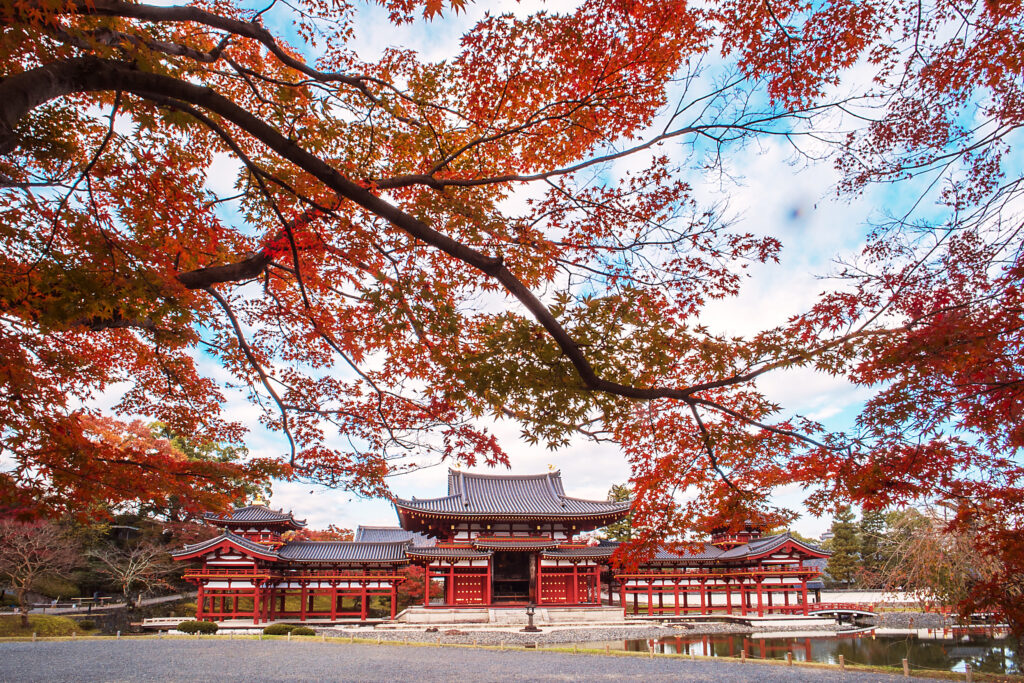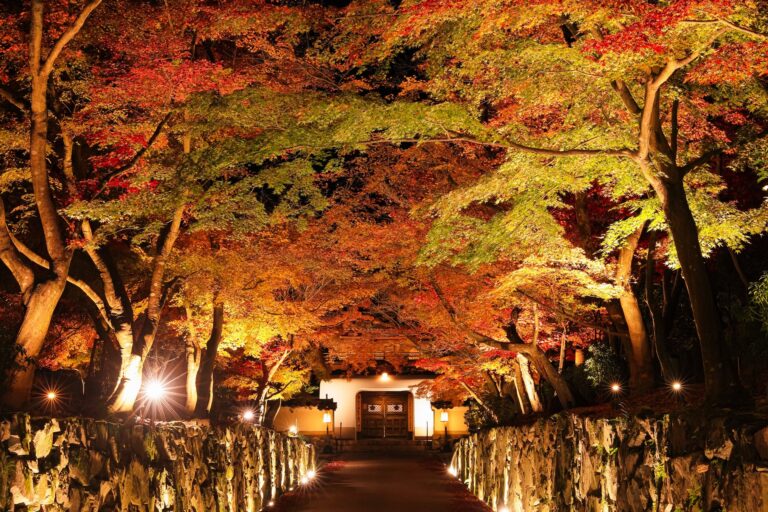Provided by: Uji City
Uji, Kyoto is popular among both domestic and international tourists as a place to experience the historical architecture, natural beauty, and traditional Japanese culture, which is listed as a World Heritage Site.
In October 2024, a variety of events will be held for visitors to enjoy along with Uji’s beautiful autumn scenery.
In addition, visitors can experience Japanese culture more deeply by touring Uji wearing kimono.
In this issue, we will introduce some of the events in Uji that will be held in October 2024 and the attractions of Uji that can be enjoyed in kimono.
Autumn in Uji: Autumn leaves and historical buildings
Uji attracts tourists with its beautiful autumn foliage in fall.
In particular, historical buildings such as Byodoin Phoenix Hall and Ujigami Shrine stand out even more in contrast with the autumn leaves, and visitors can enjoy the beauty of these buildings as if they were paintings.
When visiting these places, please try wearing a kimono.
The traditional patterns of kimono and the nature of autumn are in harmony, making them perfect for photography.
Notable Events in October 2024
A variety of events are scheduled in Uji in October that visitors to Japan can easily participate in.
The following are some of the most recommended events.
Uji Tea Festival
Uji is known as Japan’s leading producer of Uji tea.
At the Uji Tea Festival held in October, visitors can enjoy tasting new tea, experiencing a tea ceremony, and picking tea.
In addition, visitors can experience the traditional Japanese agricultural experience even more deeply by picking tea while wearing a kimono.

Uji River Lantern Festival
The Uji River Lantern Festival, held along the Uji River, is an event where fantastic lights are lit along the riverside at night.
In the beautiful lights, autumn leaves and silhouettes of buildings reflected on the surface of the river create a fantastic scene.
Attending this event in kimono will make you feel as if you have stepped back in time.
Uji Cultural Festival
The Uji Cultural Festival is an event that introduces local traditional culture and arts, and offers a wide variety of programs including music, dance, and taiko performances.
There are also workshops that tourists can freely participate in, providing a great opportunity to experience Japanese culture.
In particular, wearing a kimono to the festival is a great way to get to know the locals better.
Kimono rental and dressing experience
Uji has a number of kimono rental services for visitors to Japan.
For rentals, you can choose your favorite kimono from a wide variety of designs, colors, and patterns, and you can also have a professional dress up service.
Walking around Uji in a kimono will allow you to appreciate the beauty of the city from a different perspective.
Walking around in kimono also makes for a great photo opportunity.
Taking pictures in the historical townscape of Uji and the scenery of autumn leaves will surely be a special memory of your trip.

Gourmet food in Uji to enjoy in kimono
There are many cafes and restaurants in Uji that you can enjoy visiting in kimono.
In particular, sweets made with Uji tea and dishes with a Japanese atmosphere will be a fresh experience for visitors to Japan.
Uji Matcha Sweets
Uji is also famous for its matcha (powdered green tea), and there are many sweets made with matcha. Enjoy matcha parfait, matcha ice cream, matcha daifuku, and other authentic matcha sweets that can only be found in Uji. If you are wearing a kimono, you can enjoy your meal with an even more Japanese atmosphere.
Tour of Japanese-style cafes
Uji is dotted with cafes that have been renovated into traditional machiya townhouses.
We recommend touring the cafes while wearing a kimono.
You can spend a relaxing time in a calm Japanese-style space while savoring matcha green tea and seasonal Japanese sweets.
touring Uji’s sightseeing spots
If you are planning to tour Uji wearing a kimono, there are several tourist attractions that you should definitely visit.

Heidoin Phoenix Hall
Byodoin Phoenix Hall, registered as a World Heritage Site, is the symbol of Uji.
It was built in the Heian period (794-1185), and the building itself is so elaborate that it can be considered a work of art.
Especially in the fall, the autumn leaves are beautiful, and you can take a picture with the Phoenix Hall to make it look like a painting.
Ujigami Shrine
Ujigami Shrine is also registered as a World Heritage site and is known as the oldest shrine building in Japan.
The quiet precincts of the shrine are perfect for worshippers in kimonos.
It is worth seeing the trees on the shrine grounds as they change color with the autumn leaves.
Uji Bridge
Uji Bridge, which spans the Uji River, is a historic bridge that appears in old Japanese poetry.
Crossing the bridge while strolling along the riverside, you can feel the nature and history of Uji at the same time.
The view from the bridge while wearing a kimono is also exceptional.
Tips for a more enjoyable Uji stroll in kimono
Consider the weather and walking comfort
To enjoy Uji in kimono, first pay attention to the weather.
Especially in October, the temperature difference between daytime and evening in Kyoto is large, so it is best to bring a haori or stole for comfort.
Also, choose footwear that is easy to walk in so that you will not tire easily when touring the sights.
Make it more gorgeous with accessories
Bringing a bag that goes well with kimono and accessories such as a Japanese umbrella will make you look even better in photos.
Posing with accessories in the old streets and nature of Uji will make your photos look great on SNS.
Summary
October 2024 in Uji, Kyoto is the perfect season to enjoy the beautiful autumn leaves and historical buildings.
For visitors to Japan, touring Uji in kimono will give them a deep sense of Japanese culture and nature.
Make special memories by participating in events such as the Uji Tea Festival and the Uji River Lantern Festival, tasting traditional Japanese gourmet food, and visiting historic landmarks.
We hope you will experience a trip to Uji in autumn to experience the beauty of Japan and the depth of its culture.

